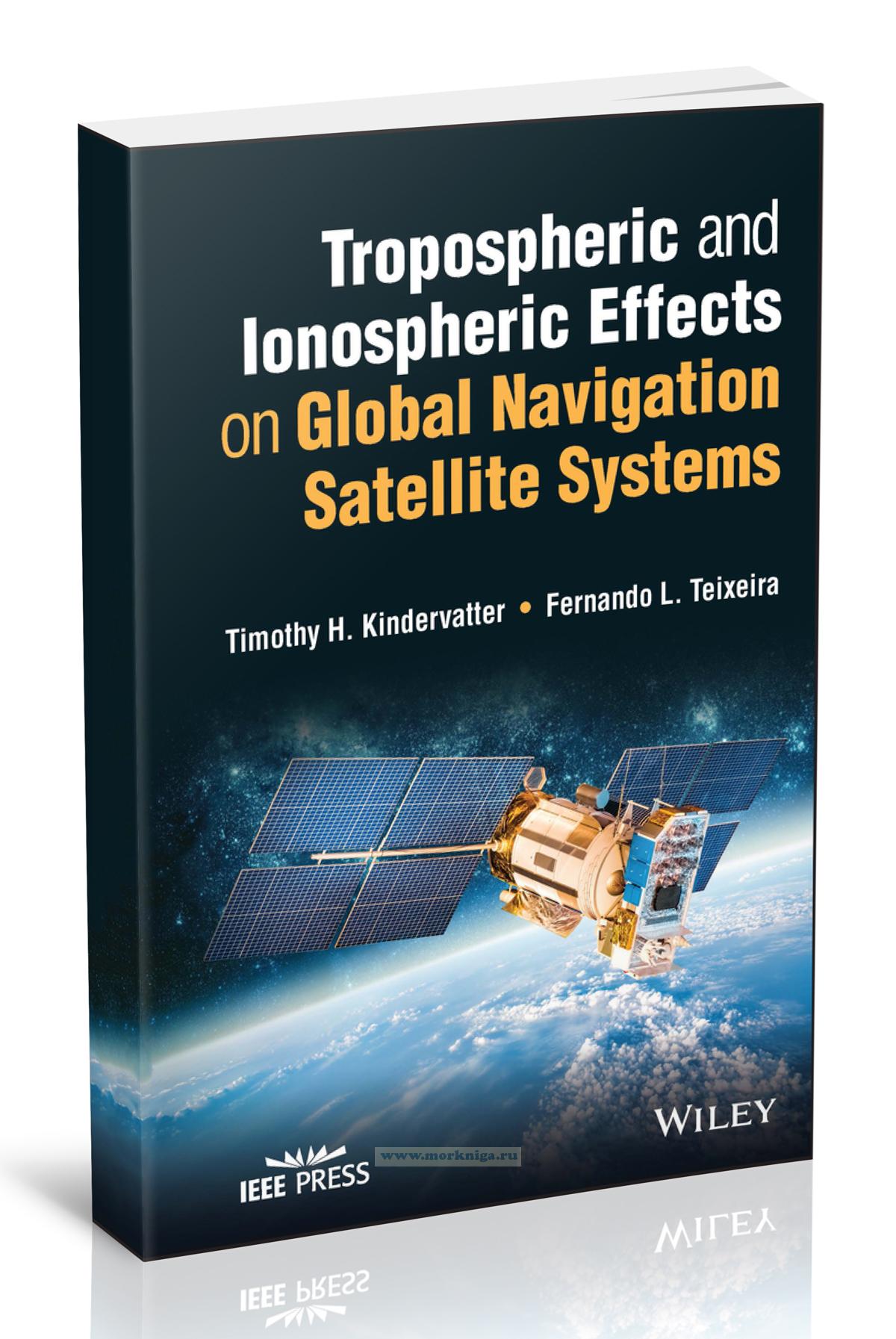Сб с 10 до 16
Tropospheric and Ionospheric Effects on Global Navigation Satellite Systems/Тропосферное и ионосферное воздействие на глобальные навигационные спутниковые системы
Издание на английском языке
The book focuses on atmospheric effects that affect the propagation of signals from GNSS satellites to ground receivers. She examines in detail the effects of the troposphere and ionosphere on positioning accuracy, including aspects such as delay group, dispersion and Faraday rotation. The book presents models such as the Klobuchar and NeQuick model for predicting and compensating ionospheric delays, and discusses various sources of errors caused by atmospheric and relativistic effects. The book includes theoretical foundations, mathematical models and practical approaches to improving the accuracy of GNSS, which makes it useful for students and specialists in the field of navigation and geodesy.
Contents
Preface
1 Overview of the Global Positioning System
1.1 Introduction
1.2 Applications of GNSS
1.2.1 Applications of Standard GNSS Positioning
1.2.2 Applications of Centimeter and Millimeter-Level Positioning Accuracy
1.2.3 Applications of GNSS Timing Information
1.3 GPS Segments
1.3.1 Space Segment
1.3.2 Control Segment
1.3.3 User Segment
1.4 Keplerian Orbits
1.4.1 Shape of Orbit
1.4.2 Vernal Point
1.4.3 Kepler Elements
1.5 Satellite Broadcast
1.5.1 Carrier Frequencies
1.5.2 Digital Modulation
1.5.3 Ranging Codes
1.5.4 Navigation Message
2 Principles of GNSS Positioning
2.1 Introduction
2.2 Basic GNSS Observables
2.2.1 Pseudorange
2.2.2 Carrier Phase
2.2.3 Doppler Shift
2.3 GNSS Error Sources
2.3.1 Clock and Ephemeris Errors
2.3.2 Relativistic Effects
2.3.3 Carrier Phase Wind-Up
2.3.4 Atmospheric Effects
2.3.5 Multipath, Diffraction, and Interference Effects
2.3.6 Hardware-Related Errors
2.3.7 Dilution of Precision
2.3.8 Additional Error Sources
2.4 Point Positioning
2.4.1 Positioning Using Pseudorange
2.4.2 Accounting for Random Error
2.4.3 Further Considerations on Dilution of Precision
2.5 Data Combinations and Relative Positioning
2.5.1 Multi-Frequency Combinations
2.5.2 Relative Positioning
3 Tropospheric Propagation
3.1 Introduction
3.2 Tropospheric Group Delay
3.2.1 Mapping Functions
3.3 Tropospheric Refraction
3.4 Extinction
3.4.1 Beer-Lambert Law
3.4.2 Scattering
3.4.3 Gaseous Absorption
3.4.4 Hydrometeor Attenuation
3.5 Tropospheric Scintillations
4 Predictive Models of the Troposphere
4.1 Introduction
4.2 Saastamoinen Model
4.2.1 First Integral
4.2.2 Second Integral
4.2.3 Putting Everything Together
4.3 Hopfield Model
4.4 U.S. Standard Atmosphere
4.4.1 Model Assumptions
4.4.2 Computational Equations
4.4.3 Data Sources and Implementation
5 Physics of the Ionosphere
5.1 Introduction
5.2 Solar-Terrestrial Relations
5.2.1 The Sun
5.2.2 The Interplanetary Medium
5.2.3 Earth’s Magnetic Field
5.2.4 The Magnetosphere
5.2.5 Earth’s Atmosphere
5.3 Physics of Ionization
5.3.1 Neutral Atmosphere
5.3.2 Ionization
5.3.3 Recombination and Attachment
5.3.4 Photochemical Processes in the Ionosphere
5.4 Chapman’s Theory of Ionospheric Layer Formation
5.5 Plasma Transport
5.5.1 Diffusion
5.5.2 Neutral Winds
5.5.3 Electromagnetic Drift
5.5.4 Combined Effects of Neutral Wind and Electromagnetic Drift
5.5.5 Continuity Equation
6 Experimental Observation of the Ionosphere
6.1 Introduction
6.2 Ionospheric Measurement Techniques
6.2.1 Ionosondes
6.2.2 Incoherent Scatter Radar
6.2.3 In Situ Measurements
6.3 Morphology of the Ionosphere
6.3.1 C Layer
6.3.2 D Layer
6.3.3 E Layer
6.3.4 Sporadic E Layer
6.3.5 F1 Layer
6.3.6 F2 Layer
6.3.7 Topside Ionosphere
6.4 Variability of the Ionosphere
6.4.1 F2 Layer Anomalies
6.4.2 Solar Activity
6.4.3 Magnetic Variation
6.4.4 Ionospheric Irregularities
7 Ionospheric Propagation
7.1 Introduction
7.2 Magnetoionic Propagation
7.2.1 Simplifications of the Appleton-Hartree Equation
7.3 Propagation Effects of the Background Ionosphere
7.3.1 Total Electron Content
7.3.2 Ionospheric Refraction
7.3.3 Group Delay and Phase Advance
7.3.4 Dispersion
7.3.5 Faraday Rotation
7.3.6 Absorption
7.4 Scintillations
7.4.1 Scale Size of Ionospheric Irregularities
7.4.2 Statistical Description of Scintillations
7.4.3 Power Spectra of Scintillations
8 Predictive Models of the Ionosphere
8.1 Introduction
8.2 Group Delay Models for Single-Frequency GNSS Receivers
8.2.1 Klobuchar Model
8.2.2 NeQuick
8.3 Global Ionospheric Scintillation Model
8.3.1 Ray Tracing in the Ionosphere
8.3.2 Multiple Phase Screen Method
8.4 International Reference Ionosphere
8.4.1 Data Sources, Inputs, and Outputs
8.4.2 Important Functions
8.4.3 Characteristic Heights and Electron Densities
8.4.4 Electron Density
8.4.5 Electron Temperature
8.4.6 Ion Temperature
8.4.7 Ion Composition
8.4.8 Additional Parameters
Appendices
A Review of Electromagnetics Concepts
A.1 Electromagnetic Waves
A.1.1 Maxwell’s Equations and the Wave Equation
A.1.2 Plane Wave Solutions
A.1.3 Constraints Via Maxwell’s Equations
A.1.4 Poynting Vector
A.2 Phase and Group Velocity
A.2.1 Phase Velocity
A.2.2 Modulated Signals and Group Velocity
A.2.3 Group Index of Refraction
A.2.4 Relationship Between Phase and Group Velocities
A.3 Polarization
A.3.1 Linear Polarization
A.3.2 Circular Polarization
A.3.3 Elliptical Polarization
A.3.4 Jones Vectors and Decomposing Polarizations
A.4 Derivation of Rayleigh Scattering
A.4.1 Electric Potential of an Ideal Dipole
A.4.2 Effective Dipole Moment of a Spherical Scattering Particle
A. 4.3 Re-radiation by a Scattering Particle
B Electromagnetic Properties of Media
B. 1 Introduction
B.2 Dielectric Polarization
B.2.1 Induced Dielectric Polarization
B.2.2 Electric Susceptibility
B.3 Lossy and Dispersive Media
B.3.1 Absorption
B.3.2 Dispersion
B.3.3 Graphical Analysis
B.3.4 Multiple Resonances
B.4 Conducting Media
B.4.1 Time-Varying Conduction Current
B.4.2 Propagation in Conducting Media
B.4.3 Combined Effects of Dispersion and Conduction
B.5 Kramers-Kronig Relations
B.6 Anisotropic Media
B.6.1 Dielectric Tensor Properties
B.6.2 Wave Equation in Anisotropic Media
B.6.3 Optical Axes
B.6.4 Index Ellipsoid
B.6.5 Phase and Group Velocity in Anisotropic Media
B.6.6 Birefringence and Spatial Walk-off in k Surfaces
B.7 Gyrotropic Media
B.7.1 Gyrotropic Susceptibility Tensor
B.7.2 Propagation in Gyrotropic Media
Bibliography
Index

